This image is dominated by a spectacular view of the rich galaxy cluster Abell 2744 from the NASA/ESA Hubble Space Telescope. But, far beyond this cluster, and seen when the Universe was only about 600 million years old, is a very faint galaxy called A2744_YD4. New observations of this galaxy with ALMA, shown in red, have demonstrated that it is rich in dust.
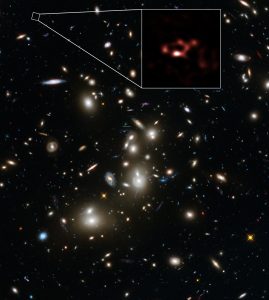
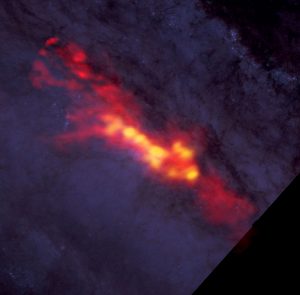
ALMA Sees Super Stellar Nurseries at Heart of Sculptor Galaxy
What is the recipe for starburst? Astronomers studied NGC 253 with ALMA to find out. These new ALMA data reveal a diffuse envelope of carbon monoxide gas (shown in red), which surrounds stellar nurseries — regions of active star formation (in yellow). By dissecting these regions with ALMA, astronomers are uncovering clues to the processes and conditions that drive furious star formation. The ALMA data are superimposed on a Hubble image that covers part of the same region.
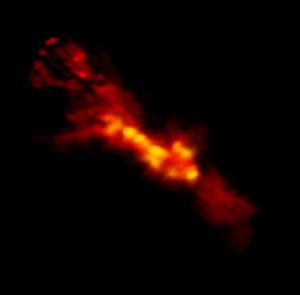
ALMA Sees Starbursting Clouds Inside NGC 253
ALMA image of starbursting clouds inside NGC 253. The red region is the lower density CO gas surrounding higher density star-forming regions in yellow.
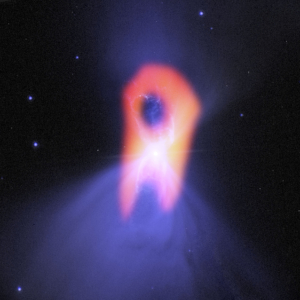
Boomerang Nebula
The Boomerang Nebula reveals its true shape with ALMA. The background purple structure, as seen in visible light (HST), shows a classic double-lobe shape with a very narrow central region. ALMA’s ability to see the cold molecular gas reveals the nebula’s more elongated shape, in orange.
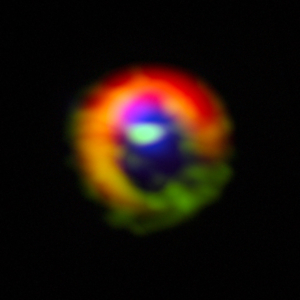
ALMA Sees a Baby Solar System
Observations made with the Atacama Large Millimeter/submillimeter Array (ALMA) telescope of the disc of gas and cosmic dust around the young star HD 142527 show vast streams of gas flowing across the gap in the disc. These are created by giant planets guzzling gas as they grow. The dust in the outer disc is shown in red. Dense gas in the streams flowing across the gap, as well as in the outer disc, is shown in green. Diffuse gas in the central gap is shown in blue. The gas filaments can be seen at the three o’clock and ten o’clock positions, flowing from the outer disc towards the center.
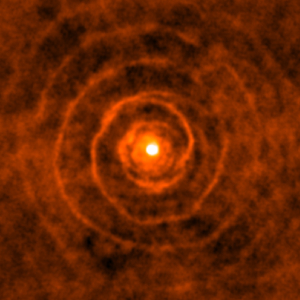
An Extraordinary Celestial Spiral with a Twist
An international team of astronomers using ALMA has unraveled the elliptical nature of the binary orbit of the old star LL Pegasi and its companion. The figure shows the composite image of molecular gas around LL Pegasi. By comparing this gas distribution depicted in exquisite detail by ALMA with theoretical simulations, the team concluded that the bifurcation of the spiral-shell pattern results from a highly elliptical binary system.





